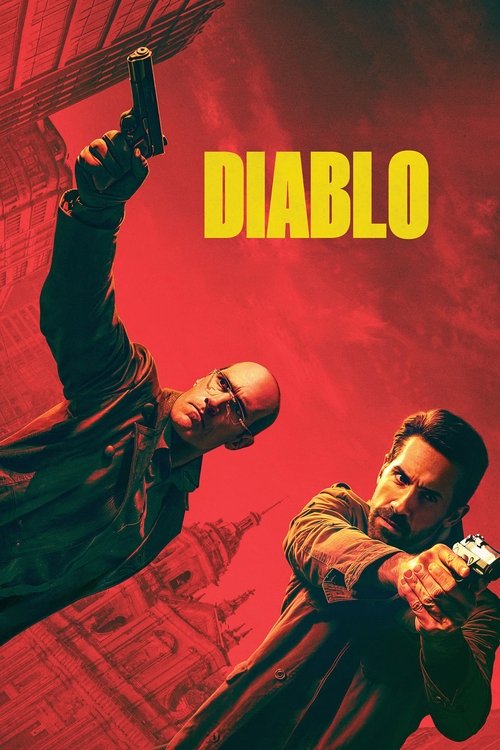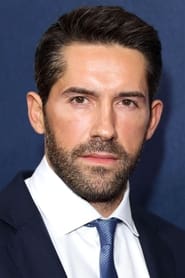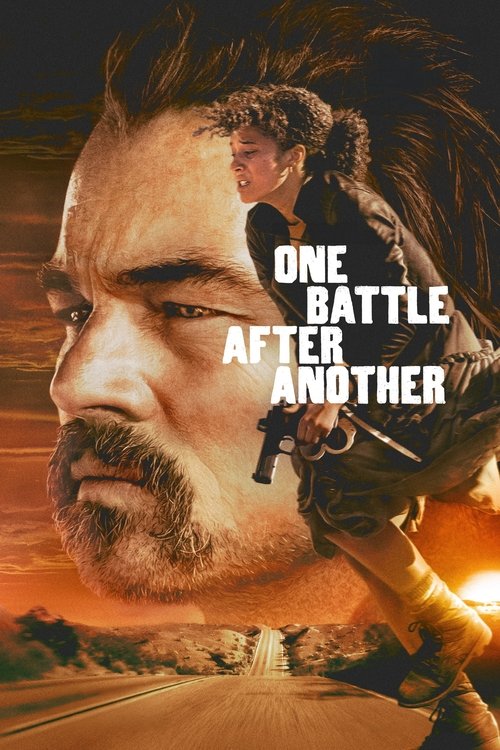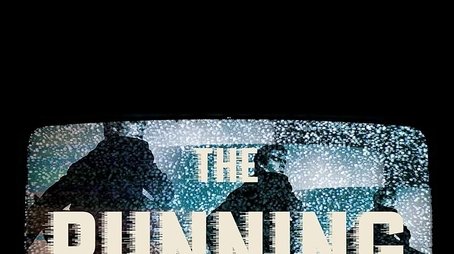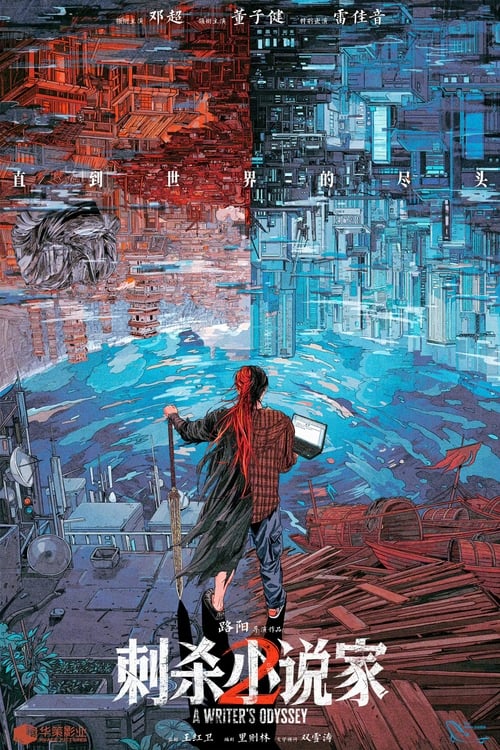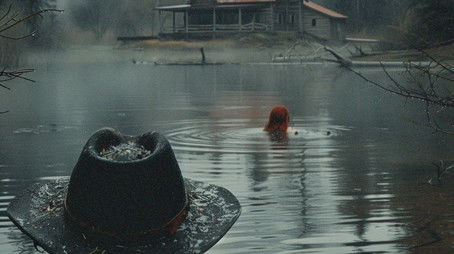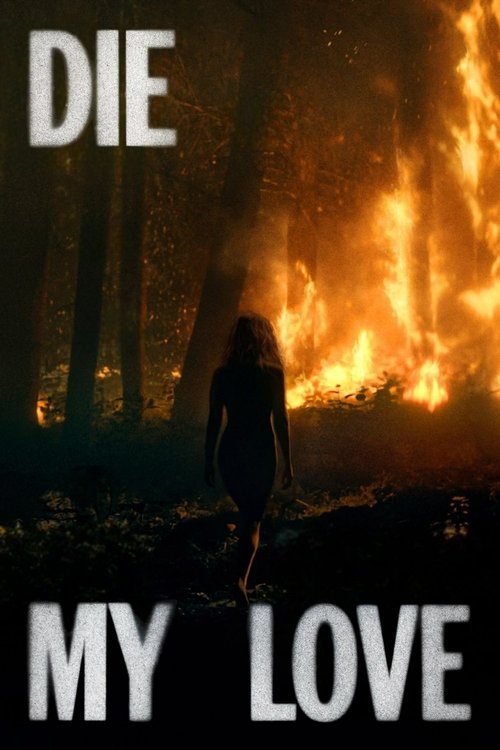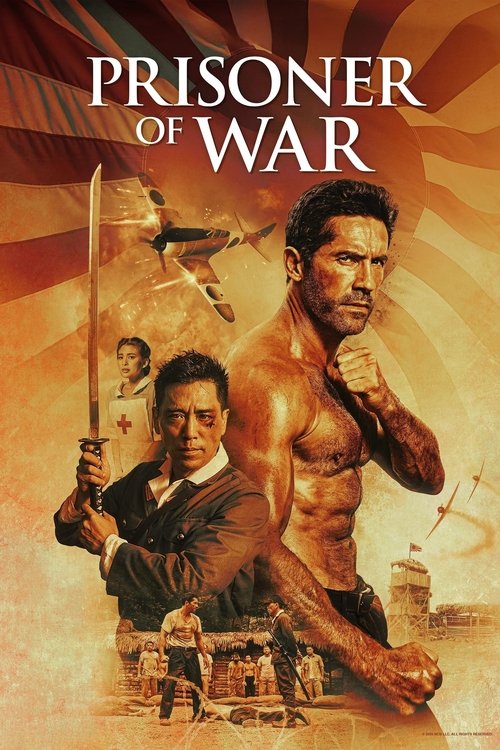
Ask Your Own Question
What is the plot?
Jackson wakes gasping from a charcoal-smoke dream to find his farmhouse and barn consumed by flames and his woman gone, dragged off through the night by a group of Mexican raiders. He staggers into the burning yard, shoots one of the attackers as the man flees, then scrabbles through the cinders until his fingers close on a small wrapped packet he had hidden the night before. By dawn his neighbors pull him to his feet; he presses the parcel to his chest and swears he will follow the trail south to take back what was taken.
On the road he comes across the man he shot still clinging to life. The wounded stranger spits a hostile, single word--"damned"--and then expires. From the corpse Jackson extracts two silver coins, a grim little charm that he slips into his palm before mounting and heading on. He pauses at a stream to drink, and an Indigenous archer unseen in the brush looses two arrows that force Jackson to make a sudden flank; in the scramble he spots a small boy huddled nearby and shoos the child away, continuing down the trail.
Later a Chinese wagon mender bars the path, demanding five silver pieces for passage. Before Jackson can respond, a man calling himself Ezra steps out of the dunes and shoots the repairman dead with a long, patient aim. Ezra and Jackson exchange terse, charged words; hands hover over holsters; the two men clash in a hard, angry fight. Just as Jackson reaches for his pistol, Ezra seems to evaporate into the dust and is gone, leaving the question of who saved him and who stalks him unresolved.
The road then erupts into violence when a gang of Mexican horsemen spring an ambush. Bullets tear into Jackson's side; he collapses, crawling through grit and blood as infection sets in. Somewhere nearby, the man who has been following--Ezra--comes upon him and kneels. Ezra tells Jackson without warmth that he will stay and watch him die, an offer that both comforts and terrifies. Jackson blacks out. When he comes back to himself, Ezra has disappeared and the same little boy from the roadside is pulling him toward a nearby Indigenous village.
The villagers wash and dress Jackson's wounds and, uncertain about his nature, subject him to a peyote test meant to reveal his spirit. Seated in a sweat lodge, Jackson inhales the visionary herb and his memories slam together: flashes of a maimed younger brother, a tattered Union uniform, a violent hand closing on a pistol. He sees, in a fevered montage, the heat of battle and a single, terrible instant where he raises a gun and the face of his brother crumples. The vision leaves him shaken and the elders determine he cannot stay; they press a horse on him and the boy steps forward to give him the mount. Jackson tries to hand his rifle to the child as if passing on a burden, but the crowd pushes the boy away and forces Jackson from the village. As he turns, Ezra reappears like a shadow and shoots dead the two adults who had been watching the boy so he could slip away with the mount, firing cold and precise rounds.
Jackson rides on with a growing need for answers and tracks a man he knew in the war, Benjamin Carver, an old comrade now living on a rural homestead. Carver's granddaughter, Rebecca, watches Jackson warily when he arrives requesting water and a saddle. Carver meets him with the guarded, hard look of a man who has seen too much; he keeps a shotgun close at hand and tells Rebecca to flee if anything goes wrong. Carver ushers Jackson into a shed to wait and tells him in blunt language that Jackson looks like a man who is losing his grip. When Jackson leaves the shed with the water jar, he finds Ezra across the yard holding Carver at gunpoint.
The confrontation is immediate and ugly. Ezra speaks in Jackson's voice and moves like him; at first it seems as though two men stand opposed, one calm and assured, one ragged and desperate. Then the veneer slips: Jackson watches himself become Ezra and in the heat of the standoff Carver is shot. The killing comes as a single, echoing gunshot. Carver slumps, blood widening on his shirt; whether the fatal bullet is fired by Jackson while he inhabits the Ezra persona or by Ezra as a separate assailant, the result is the same--Benjamin Carver dies where he stands. Ezra slips away into the brush as Rebecca screams, leaving Jackson staring at the corpse and the smear of his own hands.
That killing clarifies things for Jackson in a brutal, disorienting way: the stranger who has haunted him is not separate from him. He keeps moving, driven by the desperate belief that taking back his wife will make him whole again. He catches up to the men who took her at the family estate where they have holed up to wait out the danger. As he closes in on the homestead the attack becomes a series of explosive, close-quarters fights. Jackson rains fire on the defenders, picking off men behind wagon wheels and from the loft of a barn with bloody, single-minded efficiency. He shoots Alexsandra's brother--an unarmed man who had rushed with a blade--pricking the man's chest with a bullet that drops him in the yard. He wades through gun smoke and smashed timber, each man felled by a specific shot: one dies when Jackson takes a kneeling marksman's head with a pistol blast; another falls when Jackson kicks out a lantern and then shoots through the darkness. The assault is methodical and savage; men fall in clustered bursts as Jackson clears the compound.
Inside the homestead he finds the woman he has insisted was taken from him. Alexsandra is pale and terrified; she moves as if she recognizes that the man before her believes in a reality she never shared. She tells him--quietly, with a voice shaking--that the life he thinks they had was not theirs. She was not his wife; she was kidnapped, and she was married all along to a man named Guillermo. As Jackson presses forward she tries to keep distance, moving behind the stout wooden defenses of the family room. Jackson grabs and pins his imagined history to the wall, accusing, demanding to know why she does not love him when he has risked everything. Inside her head the truth is sharp: she remains loyal to Guillermo and the household; Jackson is a trespasser.
Alexsandra uses the only leverage she has left. She leans in and kisses him in a quick, desperate motion meant to buy time, then lashes out and snatches his gun. With trembling fingers she fires the final bullet in her chamber at Jackson; the shot catches him in the side and he staggers backwards, blood blooming through his shirt. He pushes through the door and into the yard, wounded but still upright. Guillermo stands there, very much alive, pleading with Jackson to stop the killing. Guillermo holds no rifle; he only begs and calls for the senselessness to end. Jackson stares at him, and the man's face--defiant, pleading--prompts something like a smirk to cross Jackson's lips.
Jackson raises his pistol and fires once. The shot hits Guillermo squarely; the husband collapses, a single bullet to the chest sending him down onto the churned earth. Alexsandra screams at the impact. Before she can move, another report cracks through the air--Jackson fires again. The second bullet finds Alexsandra, and her scream cuts off into a sudden, haunting silence. Both bodies lie still; the homestead is suddenly very quiet except for the settling dust and the small hiss of blood. Jackson stands over them with his pistol lowered, watching two lives end by the pull of his hand.
The movie closes on that tableau: Jackson, bloodied and breathing hard, the dead husband and the woman he had imagined at his feet, and the still-smoldering wreckage of the life he claimed to recover. Ezra, the murderous presence that has dogged him at every turn, is revealed as a fractured side of himself--sometimes a shadow at his shoulder, sometimes the hand that fires the gun--but in the last moments there is no separate figure to blame. The final frame holds on Jackson alone amid the ruined homestead as daylight begins to fail.
What is the ending?
Short, Simple Narrative of the Ending
After a violent final confrontation, Kris Chaney, the ex-convict, is fatally wounded but manages to kill the psychotic assassin El Corvo. Before dying, Kris reveals to Elisa that he is her real father and that he came to save her from the criminal life her guardian Vicente had planned for her. Elisa, now free, is left to start a new life, while Vicente's criminal empire is left in chaos.
Expanded, Chronological, Scene-by-Scene Narrative of the Ending
The climax of Diablo (2025) unfolds in a remote, sun-baked location on the outskirts of a Colombian town. Kris Chaney, battered and exhausted from days of relentless pursuit, has led Elisa--the teenage daughter of the powerful gangster Vicente--to a crumbling safehouse. Elisa, confused and frightened, has begun to trust Kris, but she is still unsure of his true intentions. Kris, driven by a desperate need to protect her and fulfill a promise to her late mother, is determined to keep her safe at all costs.
As night falls, the safehouse is suddenly surrounded. Vicente's men, armed and aggressive, move in from all sides, shouting threats. Kris barricades the doors and windows, his movements sharp with urgency. He tells Elisa to hide, his voice low and tense. Outside, the men begin to break in, their boots pounding against the wooden walls. Kris fights them off one by one, using every skill he learned in prison and on the streets. The fights are brutal and visceral--punches land with bone-jarring impact, and the camera lingers on the sweat, blood, and determination etched on Kris's face.
In the midst of the chaos, El Corvo--the psychotic assassin hired by Vicente--appears. He moves with eerie calm, his eyes cold and focused. Kris and El Corvo face off in the center of the room, the air thick with tension. Their fight is a blur of fists, kicks, and improvised weapons. Kris is outmatched in skill but not in will; he fights with a father's desperation, every move fueled by the need to protect Elisa. El Corvo, by contrast, fights with clinical precision, his face betraying no emotion.
The battle spills outside, into the dusty yard. Kris, bleeding from multiple wounds, manages to gain the upper hand through sheer grit. He disarms El Corvo and, in a final, desperate act, overpowers him. With a last, decisive blow, Kris kills El Corvo. He collapses to the ground, his body broken, his breathing labored.
Elisa rushes to his side, her face streaked with tears. Kris, knowing he is dying, looks into her eyes. He tells her the truth: he is her real father. He explains that Vicente orchestrated the death of her mother and that he came to save her from a life of crime and violence. Kris's voice is weak but earnest, his eyes filled with regret and love. Elisa, overwhelmed, holds his hand as he slips away.
With Kris dead, Elisa is left alone. The surviving members of Vicente's gang, leaderless and disorganized, flee the scene. Elisa stands in the quiet aftermath, the weight of her new reality settling upon her. She is free, but at a terrible cost.
The film ends with Elisa walking away from the safehouse, the sun rising behind her. She carries with her the memory of her father's sacrifice and the knowledge that she now has a chance to live a different life--one unshackled from the violence and corruption that defined her past.
Fate of the Main Characters
- Kris Chaney: Dies from his wounds after killing El Corvo and revealing the truth to Elisa. His final act is one of redemption and paternal love.
- Elisa: Survives the ordeal, learns the truth about her parentage, and is left to begin a new life free from Vicente's influence.
- El Corvo: Killed by Kris in the final confrontation. His death marks the end of the immediate threat to Elisa.
- Vicente: Though not present at the final battle, his criminal network is left in disarray after the deaths of his enforcers and the loss of Elisa. His ultimate fate is not shown, but his power is significantly diminished.
The ending of Diablo (2025) is a visceral, emotionally charged sequence that underscores the themes of sacrifice, redemption, and the possibility of breaking free from cycles of violence. Each character's fate is directly tied to their choices and the consequences of their actions, with Kris's final moments serving as the emotional core of the story.
Is there a post-credit scene?
Yes, the movie Diablo (2025) has a post-credit scene. After the main story concludes, the credits roll, and there is an additional scene that appears during or after the credits, typical for action films to hint at future developments or provide a final twist. However, specific details describing the content of the post-credit scene for Diablo (2025) are not explicitly detailed in the available search results. The reviews and summaries focus on the main plot, characters, and action sequences but do not describe the post-credit scene itself.
Therefore, while it is confirmed that Diablo (2025) includes a post-credit scene, the exact description or content of that scene is not provided in the current sources.
Who is Elisa in Diablo (2025) and what is her relationship to Kris?
Elisa is the daughter of Vicente, a powerful Colombian gangster. Kris, the ex-convict protagonist, kidnaps Elisa from her bodyguards and tries to convince her that Vicente is a dangerous criminal who betrayed him. Kris claims to be Elisa's father, a claim she initially distrusts but gradually accepts as she sees Kris risking his life for her.
What motivates Kris to kidnap Elisa in the movie Diablo (2025)?
Kris kidnaps Elisa as part of a mission to get payback against Vicente, the gangster who took his life from him. He aims to save Elisa from a life under Vicente's criminal control and to reveal the truth about Vicente's role in the death of Elisa's mother. Kris's actions are driven by a promise to Elisa's mother and a desire to protect Elisa from Vicente's influence.
Who is El Corvo and what role does he play in Diablo (2025)?
El Corvo is a psychopathic killer who seeks revenge against Vicente's family. He becomes a dangerous threat to both Kris and Elisa after Kris kidnaps Elisa. El Corvo pursues them relentlessly, adding a deadly element to the conflict between Kris and Vicente's criminal world.
How does Kris manage to cross the border into Colombia in Diablo (2025)?
Kris sneaks across the border into Colombia hidden in the back of a truck. During this crossing, he is extorted by the smugglers who arranged his passage, but he quickly overpowers them when they become violent, demonstrating his combat skills early in the film.
What is the nature of the conflict between Kris and Vicente in Diablo (2025)?
The conflict centers on Kris seeking revenge against Vicente, who is a powerful gangster responsible for betraying Kris and taking his life from him. Kris's kidnapping of Vicente's daughter Elisa escalates the conflict, putting them both in danger from Vicente's criminal network and the assassin El Corvo. The tension is fueled by Kris's attempt to expose Vicente's crimes and protect Elisa from his influence.
Is this family friendly?
The movie Diablo (2025) is not family friendly and is rated R due to bloody violence, strong language, and brief drug use. It contains numerous intense and graphic scenes including hand-to-hand combat, gunfights, stabbings, and close-range executions with a high level of bloodshed. The antagonist exhibits sadistic and psychopathic behavior, which can be disturbing. There is frequent use of strong profanity and some brief implied adult themes, though no nudity or explicit sexual content. Mature themes such as revenge, kidnapping, gang violence, corruption, trauma, and cold-blooded murder are central to the story. Alcohol, drug use, and smoking are also depicted, mostly in criminal contexts.
Potentially objectionable or upsetting aspects for children or sensitive viewers include:
- Graphic and bloody violence with detailed injuries and executions
- Sadistic and psychopathic antagonist behavior
- Frequent strong and explicit language
- Themes of kidnapping, revenge, and gang violence
- Brief drug use and depiction of narcotics
- Intense and frightening scenes with psychological intimidation and relentless chases
Given these elements, Diablo is suitable only for mature audiences and not recommended for children or sensitive viewers.

